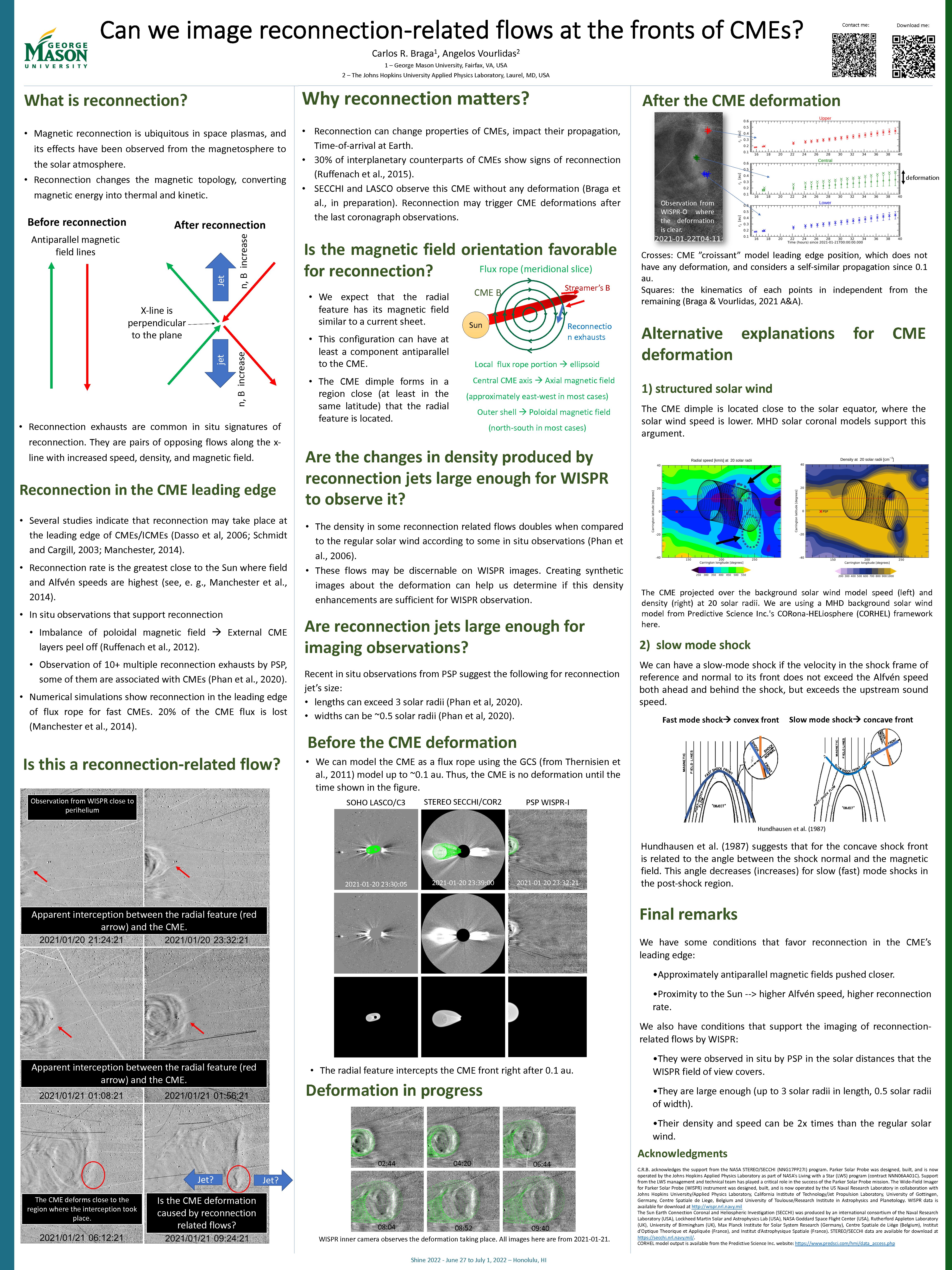Authors: Carlos R. Braga (George Mason University, Fairfax, VA), Angelos Vourlidas (Johns Hopkins University Applied Physics Laboratory, Laurel, MD)
Magnetic reconnection is ubiquitous in space plasmas, and its effects have been observed from the magnetosphere to the solar atmosphere. Reconnection changes the magnetic topology, converting magnetic energy into thermal and kinetic. Several studies indicate that reconnection may take place at the leading edge of coronal mass ejections when they interact with the ambient interplanetary magnetic field. A common in situ signature of reconnection is the reconnection exhausts; a pair of opposing flows along the x-line with increased density and magnetic field.
We wonder whether reconnection exhausts could be seen by imaging instruments, particularly by the heliospheric imagers from WISPR onboard Parker Solar Probe when the CME is close to the spacecraft. We explore observations from WISPR on 2021-01-20 when flows close to the CME leading edge could be interpreted as reconnection exhausts. PSP was at around 0.2 au, and the CME was less than 30 solar radii from the spacecraft. We focus on reconnection in the flux rope leading edge, and we present a few points that seem to support this conjecture.
First, reconnection can only happen when the orientation of the magnetic field is favorable. If we assume that the CME is a flux rope, its leading edge will have a magnetic field that is perpendicular to the local magnetic field. As the CME advances, it engulfs a bright radial feature that looks stationary in WISPR observations and resembles a streamer. Even though we do not have any information about its magnetic field, we expect it to be radial. This configuration can have at least a component antiparallel to the CME. One of the reconnection exhausts flows would be directed approximately radially towards the Sun, pushing the CME front backward. A few hours later, we see a dimple forming in that particular region in the CME leading edge.
Second, some studies suggest that reconnection exhausts lengths exceed three solar radii, and their width can be ~0.5 solar radius. Thus, at least some reconnection exhausts are large enough to be observed by WISPR.
Third, recent observations from PSP show that particle density doubles on reconnections jets when compared to the regular solar wind. These flows may be discernable on WISPR images.
We do not see the 3 points above as evidence that reconnection takes place in the leading edge of the CME, but rather as a motivation to explore this point further, particularly when in situ observations are available. Emission in the WISPR images is the result of the integration of scattering from coronal electrons along the line of slight and projection effects need to be considered. Thus, modeling of white-light emissions may help us to understand if they are visible by WISPR or not.
We explore alternative explanations for the deformation, such as CME deformation by the structured solar wind, loss of coherence, or slow shocks.


